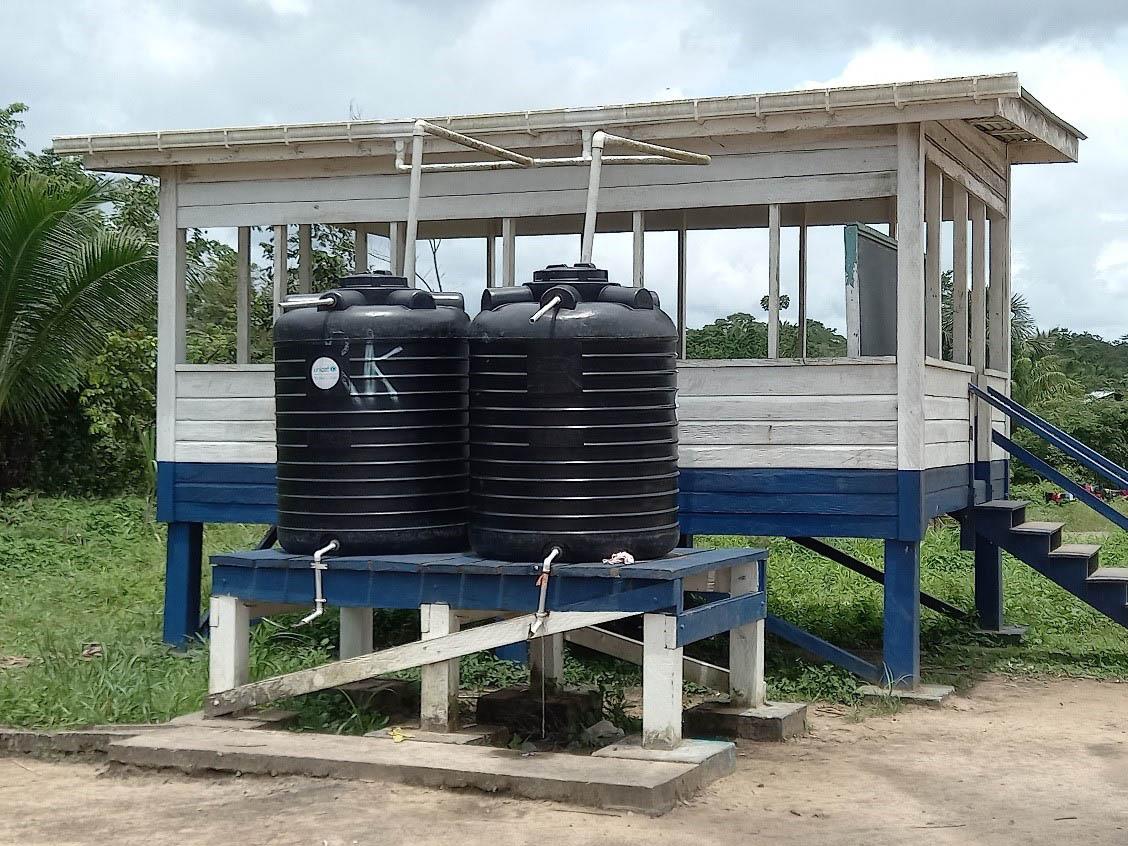A recent assessment of the water systems in Mabaruma and surrounding villages in Region One has resulted in pledges of expanded service by the Guyana Water Inc (GWI).
According to a release from GWI, a two-day visit to the Region on August 17 and 18 was made by Chief Executive Officer, Shaik Baksh and a team of technical officials. The areas visited were Yarakita, Kamwatta, White Water, Hosororo Falls and Khan’s Hill.
In Yarakita, the release said that GWI committed to improving its water coverage to 95 percent, as opposed to the current 70 percent. This would involve inspecting the well and possibly upgrading the solar panels to extend the pumping capacity to other areas, including the migrants’ settlement. GWI, with support from UNICEF and the United Nations Development Programme, is also looking at repairing an existing hand pump in the settlement area. The village currently depends on a rain water harvesting system that was established by UNICEF under the Water, Sanitation and Hygiene (WASH) programme.
e release said that the team also visited the Community Health Post in Yarakita and committed to rectifying its line network as the Health Worker there complained of an inconsistent water supply. This was due to internal plumbing issues as well as a lack of monitoring of the water supply system on the part of the Community Service Officers, the release stated.
Baksh pointed to the need to establish programmes for the monitoring and maintenance of the systems. GWI, the release said, has embarked upon a training seminar for Community Service Officers to operate and regulate the system.
“I’m not satisfied that we’re there as yet and whilst we have done some training already, it has to be more intense and we intend to return to ensure that training is delivered to all these communities so that the systems are properly maintained. If not, the level of service would decline and it would not be in the best interest of the residents”, the CEO noted.
This training will benefit Yarakita and Kamwatta and is being facilitated by GWI Officer in Charge of Region 1, Richard Robinson. According to Robinson, the wells are producing at their maximum capacity but inconsistent weather patterns have affected the functionality of the solar panels, resulting in an intermittent water supply to residents.
Robinson also highlighted plans for the extension of the distribution network in parts of Mabaruma.
Over at Khan’s Hill, Robinson noted a resistivity logging exercise was recently conducted, paving the way for a new well to be drilled to supply the area for the first time. Preparations are also being made to possibly restore a well found in the Arakuru, White Water area. At the Hosororo falls, the release said that GWI is eyeing a water source that can supply Central Mabaruma.
The study to determine the water volume and sustainability of the Hosororo spring would entail a collaboration with the Hydromet Office to monitor the flow of water for six to nine months, the release stated.









